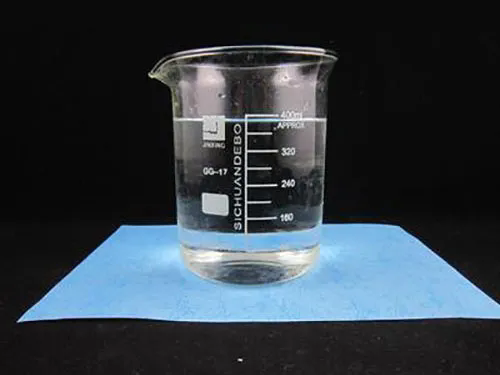Why Are Organic Fluorochemicals Key to Advanced Applications Across Industries?
2024-12-03
In the world of chemistry, organic fluorochemicals stand out as powerful compounds with unique properties that enable groundbreaking advancements in various fields. From pharmaceuticals to electronics, these fluorine-containing molecules are indispensable. But what exactly makes organic fluorochemicals so versatile and essential across industries? Let’s dive into their properties, applications, and future potential.
What Are Organic Fluorochemicals?
Organic fluorochemicals are compounds that incorporate carbon-fluorine (C-F) bonds, one of the strongest bonds in organic chemistry. This bond imparts exceptional stability and unique characteristics to the molecules, making them highly valued in numerous applications.
Fluorine’s high electronegativity and small atomic size enable these compounds to exhibit:
- High thermal and chemical stability
- Enhanced hydrophobicity and lipophobicity
- Low surface energy
- Increased metabolic stability in biological systems
Where Are Organic Fluorochemicals Used?
1. Pharmaceuticals
Fluorine is often introduced into drug molecules to improve their potency, bioavailability, and metabolic stability. Approximately 20–25% of modern pharmaceuticals contain fluorine. Notable examples include anti-inflammatory drugs, antidepressants, and antibiotics.
2. Agriculture
In crop protection, fluorochemicals enhance the effectiveness of pesticides and herbicides, offering increased resistance to environmental degradation.
3. Electronics
Organic fluorochemicals are integral to semiconductors, liquid crystal displays (LCDs), and other electronic components due to their thermal stability and dielectric properties.
4. Polymers and Coatings
Fluoropolymers and fluorinated coatings provide exceptional resistance to heat, chemicals, and weathering, making them ideal for industrial and consumer applications. Examples include non-stick cookware and weather-resistant architectural materials.
5. Energy and Environment
In renewable energy systems, fluorochemicals are used in electrolytes for lithium-ion batteries and as components in photovoltaic cells. Their stability also plays a role in environmentally friendly refrigerants and solvents.
6. Specialty Materials
Fluorinated compounds contribute to the development of high-performance materials used in aerospace, automotive, and medical devices.
Why Are Organic Fluorochemicals So Essential?
1. Exceptional Performance
The unique combination of properties provided by the C-F bond allows for advanced functionality not achievable with other compounds.
2. Versatility
Fluorochemicals can be tailored for specific applications, from creating hydrophobic surfaces to enhancing drug efficacy.
3. Safety and Efficiency
In pharmaceuticals, fluorine incorporation often leads to safer drugs with fewer side effects and lower doses, improving patient outcomes.
4. Longevity
Fluorinated materials are incredibly durable, reducing the need for frequent replacements and lowering costs over time.
Challenges Associated with Organic Fluorochemicals
1. Complex Synthesis
Producing fluorochemicals often requires specialized techniques and conditions, increasing costs and technical barriers.
2. Environmental Concerns
Some fluorinated compounds, such as perfluorinated chemicals (PFCs), have raised environmental and health concerns due to their persistence and bioaccumulation. Efforts are ongoing to develop biodegradable alternatives and implement stringent regulations.
3. Cost Factors
The raw materials and processes involved in creating fluorochemicals are often expensive, limiting their accessibility in some industries.
The Future of Organic Fluorochemicals
1. Sustainable Alternatives
Researchers are developing eco-friendly fluorochemicals that retain their benefits while minimizing environmental impact.
2. Emerging Applications
- Medicine: Advancements in fluorinated drugs for targeted therapies.
- Energy: New materials for next-generation batteries and fuel cells.
- Nanotechnology: Fluorinated compounds used in coatings and nanoscale materials for enhanced functionality.
3. Regulatory Innovations
Governments and industries are working together to establish safer manufacturing practices and promote the use of sustainable fluorochemical technologies.
Conclusion
Organic fluorochemicals have transformed industries with their unmatched properties and versatility. While challenges remain, ongoing research and innovation promise a future where these compounds continue to drive progress in safer, more sustainable ways.



